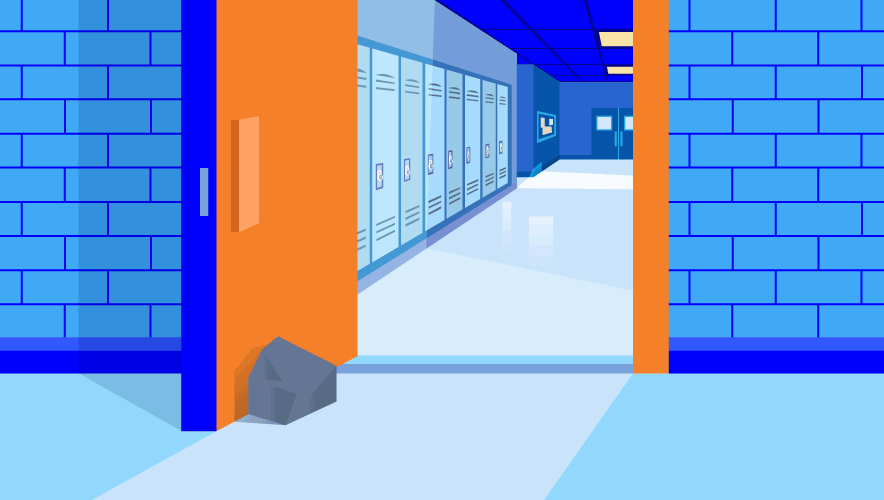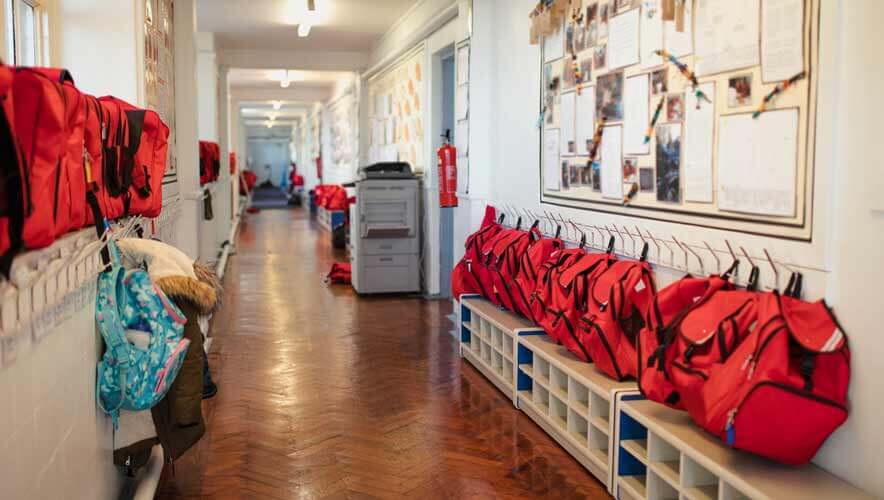Arizona School District Invests in Customizable Proactive Security Alerts
Feeling safe has a huge impact for students in K-12 schools. The 2021 Youth Risk Behavior Survey from the U.S. Centers for Disease Control and Prevention (CDC) found that 8.6 percent of high school students did not go to school at least one day out of the prior 30 because they did not feel safe at—or on their way—to school.
This feeling of unsafety may have existed because 6.6 percent of high school students said they had been threatened or injured with a weapon on school property in the prior year, 5.8 percent were in a physical fight on school property, and 15 percent were bullied on school property.
“A safe school environment is crucial to the healthy academic and social development of students, and the safety of a school environment affects a range of factors, from staff retention to parent satisfaction,” according to a fact sheet on student perceptions of safety from the Readiness and Emergency Management for Schools (REMS) Technical Assistance Center. “Perhaps most important, student perceptions of safety affect their academic achievement. When students feel safe, they are better able to focus on learning, which in turn leads to increased academic achievement. Therefore, stakeholders in school emergency preparedness should strive to determine whether their students and staff are comfortable in their school environment, both physically and emotionally, and whether students’ families are comfortable with the school environment in which their children learn.”
Part of that effort lies in shifting from a reactive to a proactive security strategy, says Adam Neely, principal of Prescott High School in Arizona’s Prescott Unified School District, which serves 3,500 to 4,000 students. Neely has worked within the Prescott school district for 18 years as a math teacher, basketball coach, assistant principal, and now principal.
“We had been doing everything we could to create the safest environment for our kids,” he says. “We want to be able to focus on learning, and that doesn’t happen if they feel unsafe. We’ve gone through a process over the years—we’ve added gates, we created a single point of entry, we’ve upped our camera usage—but what took me toward technology in general was going from reactionary to response, especially with early identification…. This puts us in a place where we can identify things before they’re a problem.”
The process began with an in-depth analysis of the school’s existing assets and its evolving needs.
As a former math teacher, Neely wanted to look at the numbers behind security decisions, asking what the return on investment would need to be for a new system. But it’s difficult to put a price on making a school as safe as it can be, he adds, so he focused on the ability to identify threats proactively so Prescott could reach its next level of security.
The high school had plenty of surveillance cameras—more than 100—but it lacked a method to actively see what’s happening and respond in a timely fashion, especially because no one on staff was tapped to constantly monitor the camera system. So, Neely began investigating solutions that could seamlessly integrate with existing cameras while providing real-time insights to internal first responders and stakeholders.
Eventually, Neely decided to pursue a pilot program with VOLT.ai, a cloud-based artificial intelligence (AI) company that enhances physical security. This integration enabled Neely and his team to quickly review a geolocated map of the high school, set rules for alert triggers, receive incident notifications, and verify alerts via video to enable more accurate and timely responses.
The AI-powered system can be programmed to detect any number of scenarios relevant to a school district, including a certain number of people crowding into a space at a certain time (alerting, for example, when many people are in the hallway when it is not a passing period), “person down” on the floor, or any kind of weapon. In the event of a fight or weapon being fired, the perpetrator will likely move away from the scene, and the system can help school officials actively track that individual through a person and object tracking function.
What took me toward technology in general was going from reactionary to response, especially with early identification…. This puts us in a place where we can identify things before they’re a problem.
The video verification feature is especially useful for Neely, especially where high school students are concerned. After the system detects a potential incident, it notifies predetermined internal first responders via cell phone and email; that list of recipients usually includes Neely, but it can also involve the school resource officer (SRO) or others. The push notification enables the recipient to immediately click on the video footage or view a live feed from his or her mobile device. The recipient clicks a button to confirm the video has been checked, and if needed, a link to the incident can be immediately shared with others to enable a response.
In one case, the “person down” feature identified a student sitting on the ground collecting his homework, so Neely avoided dispatching a response. In another case, the function identified a student on the floor alone; within 15 seconds, the system notified Neely, who quickly responded to the student using the security system’s geolocation tool to find her exact location. The student was having an asthma attack.
“Was it life threatening? No,” Neely says. “But was it really important that I respond to her and got her what she needed? Yeah. And I got that because of the technology that popped up on my phone and said, ‘This is happening.’”
The high school launched a two-month pilot program of the technology in November 2022. Neely chose this time frame because he wanted to test the system both when students were on-campus and during winter break. The school also serves as a community hub—as many high schools do—and there are non-school activities on campus daily that put the school’s security infrastructure to use.
“It’s interesting to see how the systems handles both sides of that—when the campus is full of kids and when the campus is full of community members,” Neely says.
The rules for the security management system can be tweaked to fit the time of year, so Neely could hand off his position as primary contact if he’s out of the area and unable to respond, or a different trigger can be added to the system to account for campus usage hours over the summer.
So far, the community has had nothing but positive feedback about the system, Neely says. The pilot program was so well received that Neely decided to continue using the system, fine-tuning it for different scenarios and working to integrate the VOLT.ai program into all emergency response planning for the school.
Learn more about this solution by contacting Jason Alestra, VOLT.ai head of sales, at [email protected].
Claire Meyer is managing editor of Security Management. Connect with her on LinkedIn or email her directly at [email protected].











